
South Haven is a city in the U.S. state of Michigan. Most of the city is in Van Buren County, although a small portion extends into Allegan County. The population was 4,403 at the 2010 census.
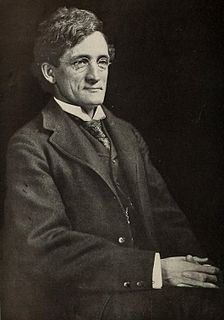
Liberty Hyde Bailey was an American horticulturist and botanist who was cofounder of the American Society for Horticultural Science. Bailey is credited with being instrumental in starting agricultural extension services, the 4-H movement, the nature study movement, parcel post and rural electrification. He was considered the father of rural sociology and rural journalism.

The Home of Franklin D. Roosevelt National Historic Site preserves the Springwood estate in Hyde Park, New York. Springwood was the birthplace, lifelong home, and burial place of the 32nd president of the United States, Franklin D. Roosevelt. The National Historic Site was established in 1945.

Liberty Hall is a historic house museum in Crawfordville, Taliaferro County, Georgia, in the eastern Georgia Piedmont. It was the home of Alexander H. Stephens, a prominent Georgia political figure who was a member of the U.S. House of Representatives (1843–1853), Vice President of the Confederate States of America (1861–1865), and after the end of the American Civil War, a member of the U.S. House of Representatives again (1873–1882) and governor of Georgia (1882–1883). Stephens resided in the home from 1839 until his death in 1883. The home is now a museum and part of A. H. Stephens Historic Park, a Georgia state park maintained by the Georgia Department of Natural Resources and designated historic district. The larger A. H. Stephens Historic Park contains tent and trailer sites, picnic sites, and fishing ponds, as well as a nature trail and rustic cabins, and was mostly built by the Civilian Conservation Corps, beginning in 1933.

TheWar Memorial, also known as the Russell A. Alger Jr. House and as the Moorings was dedicated to the memory of veterans and soldiers of World War II. It is located at 32 Lake Shore Drive in Grosse Pointe Farms, Michigan.

Paulsdale is a historic estate and house museum in Mount Laurel Township, New Jersey. Built about 1840, it was the birthplace and childhood home of Alice Paul (1885-1977), a major leader in the Women's suffrage movement in the United States, whose activism led to passage of the Nineteenth Amendment to the United States Constitution, granting women the right to vote. It was added to the National Register of Historic Places on July 5, 1989, for its significance in social history and politics/government. Paulsdale was designated a National Historic Landmark in 1991.

The Elijah Miller House is a historic home in North White Plains in Westchester County, New York. The house is an 18th-century Rhode Island-style farmhouse that was used during the Revolutionary War by General George Washington as a headquarters command post during the Battle of White Plains. The house, which is now a museum, was home to the average Colonial Westchester Ann and Elijah Miller family and contains many artifacts for public viewing.

Greenmead Historical Park, also known as Greenmead Farms, is a 3.2-acre (1.3 ha) historic park located at 38125 Base Line Rd., Livonia, Michigan. It includes the 1841 Greek Revival Simmons House, six other structures contributing to the historic nature of the property, and additional buildings moved from other locations. Greenmead Farms was designated a Michigan State Historic Site in 1971 and listed on the National Register of Historic Places in 1972.

The Cobblestone Farm and Museum, which includes the Dr. Benajah Ticknor House is an historical museum located at 2781 Packard Road in Ann Arbor Michigan. The museum gets its name from the cobblestone used to build the farmhouse. It was listed on the National Register of Historic Places in 1972 and designated a Michigan State Historic Site in 1973.

The John Pennington–Henry Ford House, also known as the John Banks House, is a private residence located at 8281 Clinton Macon Road in Macon Township in the northeast corner of Lenawee County, Michigan. It was designated as a Michigan Historic Site on September 17, 1974, and later added to the National Register of Historic Places on December 31, 1974.

The John and Eliza Barr Patterson House is a private house located at 6205 N. Ridge Road in Canton, Michigan, United States. It was listed on the National Register of Historic Places in 2000.
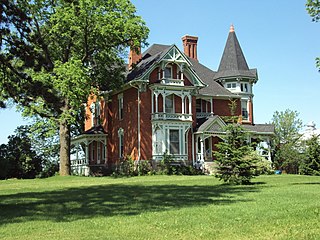
The George B. Horton and Amanda Bradish Farmstead is a privately owned farmhouse that sits on 40 acres of land at 4650 West Horton Road in rural Fairfield Township in Lenawee County, Michigan. It was added to the National Register of Historic Places on February 1, 2007. There are several other buildings on the property, but the main farmhouse was built in 1888 in Queen Anne Style.

Eustace Hall located on Laboratory Row is the only building on Michigan State University's main campus in East Lansing, Michigan that is on the National Register of Historic Places. Designed in a mix of "Queen Anne massing, Richardsonian Romanesque features, and Shingle Style", it was built in 1888 as the Horticultural Laboratory Building. Its design has been variously attributed to noted MSU alumnus and noted horticulturist Liberty Hyde Bailey and to Lansing architect William Appleyard It housed the horticulture department until 1924 when a new horticulture building was opened. It then became the University College Building until 1961 when it was renamed for Harry J. Eustace who chaired the Horticulture Department from 1908 to 1918.
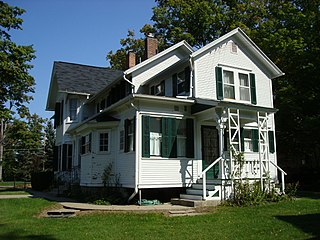
The Mann House is a historic home located at 205 Hanover Street in Concord, Michigan. It is a Michigan State Historic Site and is listed on the National Register of Historic Places. It has been operated as a museum since 1970.

The Stahly–Nissley–Kuhns Farm is a historic farm located at Nappanee, Elkhart County, Indiana. Nappanee was established in 1874. The Farm is part of Amish Acres, which includes the old farmstead and additional structures brought in to show Amish life.

The Nathaniel and Esther (Savidge) Robbins House is a private house located at 20 South 5th Avenue in Grand Haven, Michigan. It was listed on the National Register of Historic Places in 2009.
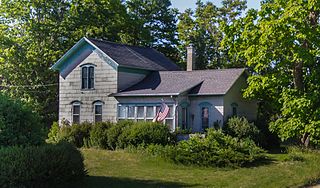
The Rock S. Edwards Farmstead is a collection of farm buildings located at 3503 Edwards Road in Sodus Township, Michigan. It was listed on the National Register of Historic Places in 1995.
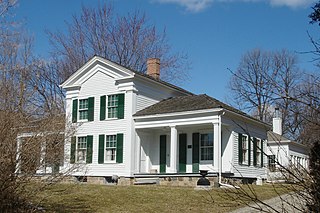
The Royal Aldrich House is a single-family house located at 31110 West 11 Mile Road in Farmington Hills, Michigan. It was listed on the National Register of Historic Places in 1994. It is one of a few remaining Greek Revival style houses in southeast Michigan still located on the site where built.

The William Horton Farmhouse is a single family home located at 1647 West Miller Road near Morrice, Michigan. It was listed on the National Register of Historic Places in 1986. It is one of the finest rural Italianate farm homes in the area.

The Waterloo Farm Museum is a museum located at 9998 Waterloo-Munith Road in Waterloo Township, Michigan. It was originally the Siebold Farm and then the Realy Farm. The farm was listed on the National Register of Historic Places in 1973.






















